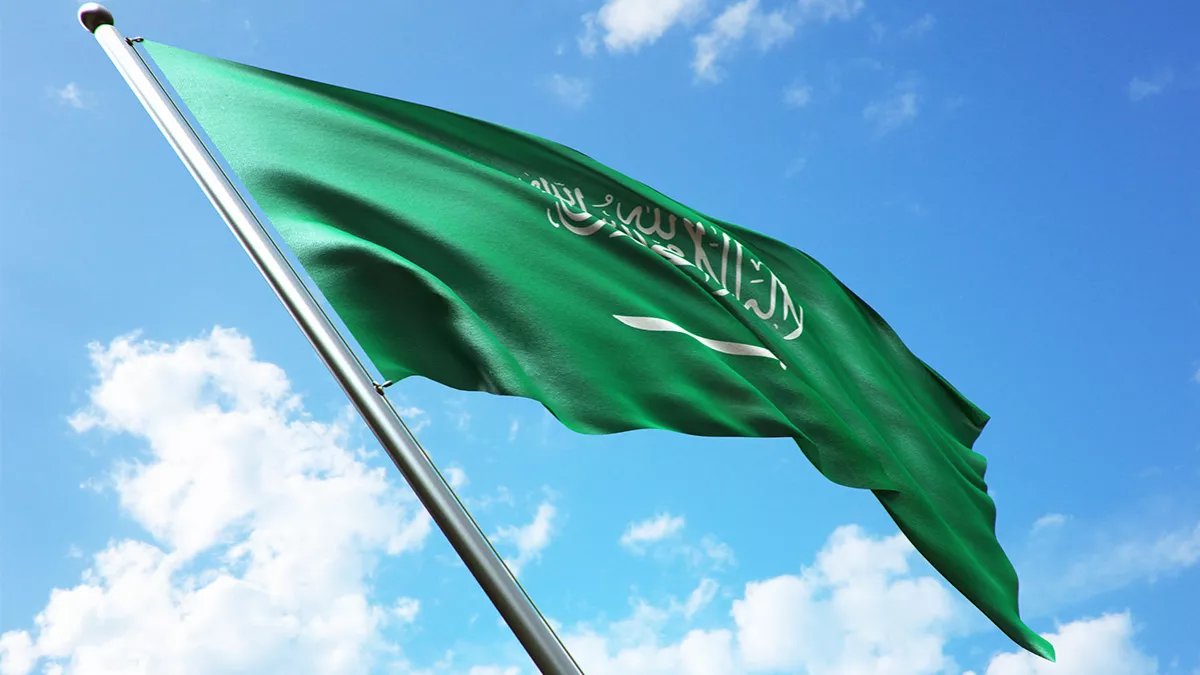
The national flag of the Kingdom of Saudi Arabia has been a symbol of strength, sovereignty, and national unity since the foundation of the Saudi state in 1727. For nearly three centuries, the flag has been a beacon, haven, banner, and testimony of the unification campaigns that the Saudi state has undergone. Custodian of the Two Holy Mosques King Salman issued a royal decree on March 1 designating March 11 every year as a special day to celebrate the national flag.
The history of Saudi Arabia's flag dates back to the banner of Imams of the first Saudi state, who founded the state and unified its territories. The banner was green in color with the inscription "There is no god but Allah, Muhammad is the Messenger of Allah" and it was raised on a wooden pole.
The flag maintained these specifications throughout the first and the second Saudi states. Two crossed swords were added to the flag at a pivotal phase during King Abdulaziz's reign when he led the campaign for the unification of the country, its security and welfare.
At a later stage, the two swords were replaced by a single sword at the top. Subsequently, the sword was placed below the Islamic creed of "There is no god but Allah, Muhammad is the Messenger of Allah". The design of the flag finally settled to what it is today with the words of monotheism and a drawn sword under that.
The shape of the flag, its coordination, and its components were collectively inherited until the Shoura Council presented a recommendation to King Abdulaziz, who approved the final design on March 11, 1937 AD ( Dhul-Hijjah 27, 1355 AH). The Saudi Flag bylaw was issued in 1393 AH / 1973 AD.
The bylaw stipulates that the flag of Saudi Arabia be rectangular in shape, its width equal to two-thirds of its length, and its color green, extending from the mast to the edge of the flag. The creed “There is no god but Allah, Muhammad is the Messenger of Allah” is written in the middle. A drawn sword with its grip directed to the lowest part of the flag is placed below parallel to the words of monotheism written in Thuluth script. The creed and the sword are in white, clearly visible from both sides. The base of the flag is placed in the middle of the width of the word of monotheism and the sword is at a length equal to three-quarters of the the testimony of monotheism at an equal distance from both sides.
Each of the colors and slogans has deep connotations. Green symbolizes growth and fertile soil, white is a symbol of peace and purity, and the sword represents justice and security. This symbolism of the sword has Arab roots and represents Arab nobility and virility. The word of monotheism is proof of the Oneness of Allah and the application of His Shariah (Islamic law) on the sound methodology on which the Kingdom was founded and has followed through its three stages of formation.
The Saudi flag is unique among the flags of the world and has special characteristics that bestow on it an aura of awe, reverence, and glorification. It is prohibited to wrap the flag on the bodies of dead kings and leaders, nor is it lowered at half-mast on occasions of grief, and it does not bow to the guests who review the guard of honor. When it is necessary to do so in mourning, the flag is raised upside down by placing it in the middle of the column, devoid of the word of monotheism for a specified period. It is prohibited to be used as a trademark or for advertising as this would undermine its prestige.
Even on official holidays, the national flag is raised atop all government buildings and public institutions inside the Kingdom and its missions abroad. The flag can be flown only when in good shape and in accordance with international protocol. The flag is prohibited for use while in poor condition. If its color has faded or if the flag is about to be damaged, it is sent to the official authorities to burn in a specific manner.
The Saudi flag has always flown high and continues to do so today. It has a unique and special meaning that sets it apart from other flags because it symbolizes the fundamentals of the faith and the country, the environment and the land, and the unity that the Kingdom of Saudi Arabia represents on the Arabian Peninsula.
Emanating from the belief of the government of the Custodian of the Two Holy Mosques, King Salman bin Abdulaziz and the Crown Prince that the flag has great significance as a manifestation of the Saudi state, its strength, and sovereignty and is a symbol of cohesion, harmony, and national unity, a Royal Decree was issued on Sha'aban 09, 1444 AH corresponding to March 01, 2023, dedicating March 11 of every year to be a special day to commemorate the flag under the name “The Flag Day" because Dhul-Hijjah 27, 1355 AH, corresponding to March 11, 1937, was the day the Founder, the late King Abdulaziz, endorsed the flag in the form seen today fluttering with its great connotations that refer to monotheism, justice, strength, development, and prosperity.
